Workshop on Performance of Industrial Wireless Mechatronics Systems
June 8th 2021
Wireless technologies have become pervasive in everyday life. They are gradually being accepted for use in industrial automation systems. However, users are concerned with reliability and robustness when wireless systems are implemented and deployed in industrial applications. It will give users more confidence if there were a way to inform them how well their wireless systems are performing. In this workshop, we will examine practices for industrial wireless system deployments, concepts of wireless systems key performance indices (KPI) and metrics, and assessment methods that can lead to performance assessment standardization, as well as research ideas and collaboration opportunities.
Agenda
|
13:00 CET
|
Welcome and introduction of participants – Mr. Kang Lee, NIST
|
|
|
13:10 CET
|
Workshop Objectives, Ongoing Work, and Expected Output – Dr. Richard Candell, NIST
|
|
|
13:30 CET
|
|
|
|
14:15 CET
|
“5G (URLLC and TSN) for Industrial Automation” – Dr. Raheeb Muzaffar, Silicon Austria Labs
|
|
|
14:45 CET
|
Coffee break
|
|
|
14:50 CET
|
Group discussion with attendee’s participation – Dr. Richard Candell and Mr. Kang Lee, NIST
|
|
|
|
|
|
|
15:30 CET
|
|
|
|
15:45 CET
|
|
|
|
16:00 CET
|
|
|
|
16:30 CET |
Group discussion with attendee’s participation - Dr. Richard Candell and Mr. Kang Lee, NIST |
|
|
|
|
|
|
17:25 CET
|
Coffee Break
|
|
|
17:30 CET
|
Group discussion continued – Dr. Richard Candell and Mr. Kang Lee, NIST
|
|
|
|
||
|
18:00 CET
|
Conclusion with Summary and Action Items – Dr. Richard Candell and Mr. Kang Lee, NIST
|
|
|
18:15 CET
|
Workshop adjournment
|
Sponsored: IEEE Industrial Electronics Society (IES) Standards Committee
Technical Co-sponsors: National Institute of Standards and Technology (NIST)
IMS Technical Committee on Sensor Technology, TC-9
Silicon Austria Labs
IES Committee on Cloud & Wireless Systems for Industrial Applications
IES Committee on Control, Robotics, and Mechatronics
IES Committee on Industrial Cyber-Physical Systems
IES Committee on Industrial Informatics

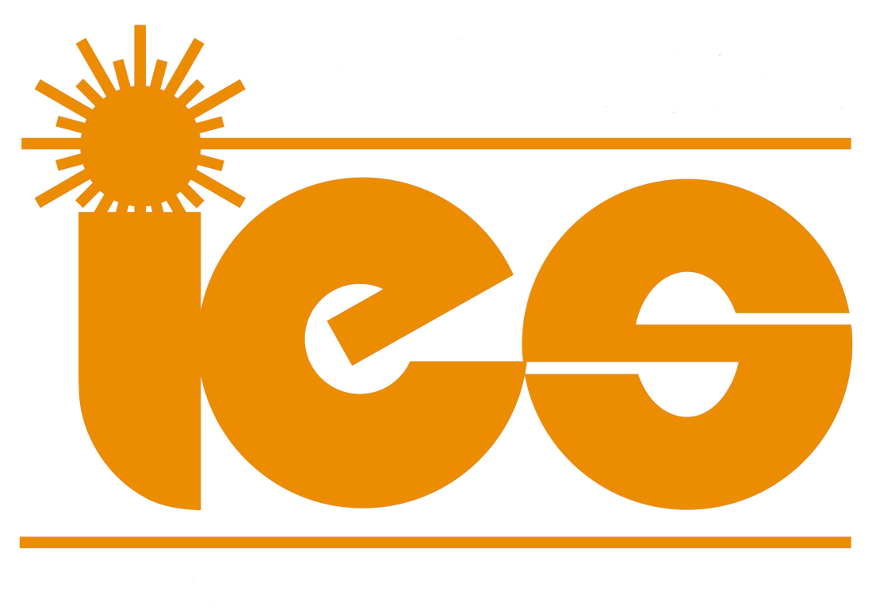
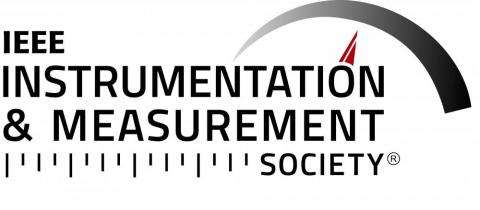

5G and Beyond for Industrial Automation - Performance Metrics
Abstract:
The deployments of 5G networks have accelerated in the last 12 months and are expected to reach new levels in the next two years. The following aspects of 5G will be explored and addressed.
- The main capabilities of 5G especially when it comes to providing wireless connectivity for a wide range of new applications and use cases.
- The development of the 5G ecosystem and some forecasts in terms of traffic.
- The main 3GPP standard features in particular 3GPP Releases 15 to 17.
- The main performance metrics such as latency, reliability, availability, data rate, etc.
- How to come up with the requirements for the performance metrics and derive the requirements for industrial/manufacturing applications.
- How industries such as manufacturing are adopting and planning for 5G.
Speaker: Dr. Afif Osseiran, Ericsson
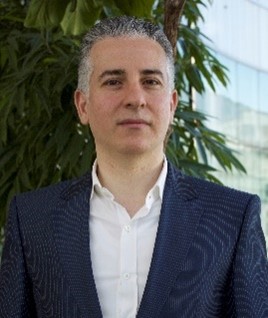
Dr. Afif Osseiran is director of Industry Engagements & Research at Ericsson’s headquarter in Stockholm. He is also vice-chairman of the 5G-ACIA alliance and a senior member of IEEE. His main responsibility is to bridge insights, tactics, and strategies between technology, research/standardization, and industrial sectors such as manufacturing. He holds a doctorate’s degree from the Royal Institute of Technology (KTH), Sweden, a master’s degree from École Polytechnique de Montreal, and another one from INSA Rennes, France. Since 1999 he has held several positions at Ericsson in various units. From 2014 to 2017, he was director of radio communications at the Ericsson CTO office with the main responsibility to develop the strategy for 5G and Industrial IoT. From 2012 to 2014, he managed METIS, the EU 5G flagship project. He co-authored the first comprehensive book on 5G with Cambridge University Press and two books on IMT-Advanced with Wiley.
Recent years have brought significantly increased interest in integrating wireless communication capability within factory automation systems. Such integration motivates the study of interactions among the physical layout of factory workcells, wireless communication among workcells, and improving the overall factory system performance. This presentation introduces a novel framework for modeling and simulating these interactions. Our simulation framework employs model- based design principles to enhance design reliability, and enable systematic and efficient integration of control, topology, and network modeling aspects. The presentation also applies the proposed simulation framework to the experimental study of complex design spaces for factory automation systems. The proposed methodology for modeling, simulation, and design space exploration can be used to gain insight into approaches for improving the configuration (e.g., physical layout or wireless protocol settings) of existing factory systems, and for understanding trade-offs in the design of new systems.
5G (URLLC and TSN) for Industrial Automation
Abstract:
Wireless networking of industrial devices is beneficial for ease of integration, increased flexibility, mobility, and reduced cost. The 5G support for Ultra-Reliable Low Latency Communication (URLLC) will play an essential role in providing communication service to industrial applications that require fast and reliable packet delivery with high service availability. Besides URLLC, 5G integration with Time-Sensitive Networking (TSN) shall support deterministic wireless communication. This talk will present the technology components that enable URLLC and gives an overview of 5G integration with the TSN set of standards. Moreover, the communication requirements of industrial use cases and corresponding 5G QoS support will be the focus of the presentation.
Speaker: Dr. Raheeb Muzaffar, Silicon Austria Labs
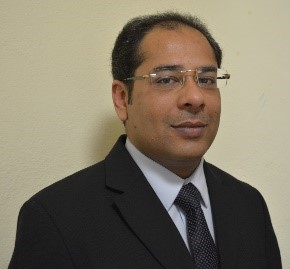
Dr. Raheeb Muzaffar is working as a scientist with the Wireless Communications team at Silicon Austria Labs GmbH, Austria since April 2020. He received the bachelor’s and master’s degrees in computer science from Bahria University, Pakistan, in 2001 and 2002, respectively, and the M.S. degree in information technology from National University of Sciences and Technology, Pakistan, in 2006. He worked for six years with various ICT organizations post his MS degree. From 2012 to 2016, he worked as a researcher with the University of Klagenfurt, Austria, and Queen Mary University of London, U.K., under the Erasmus Mundus Joint Doctorate Program and received his doctorate in 2016. From 2016 to 2020, he worked with Lakeside Labs GmbH, Austria under various research projects related to multi-drone systems. His research interests include wireless communication, cellular networks, multimedia communication, and communication for factory automation.
Model-based Cosimulation and Design Space Exploration or Industrial Wireless Networks
Abstract:
Recent years have brought significantly increased interest in integrating wireless communication capability within factory automation systems. Such integration motivates the study of interactions among the physical layout of factory workcells, wireless communication among workcells, and improving the overall factory system performance. This presentation introduces a novel framework for modeling and simulating these interactions. Our simulation framework employs model-based design principles to enhance design reliability, and enable systematic and efficient integration of control, topology, and network modeling aspects. The presentation also applies the proposed simulation framework to the experimental study of complex design spaces for factory automation systems. The proposed methodology for modeling, simulation, and design space exploration can be used to gain insight into approaches for improving the configuration (e.g., physical layout or wireless protocol settings) of existing factory systems, and for understanding trade-offs in the design of new systems.
Speaker: Dr. Shuvra Bhattacharyya, University of Maryland
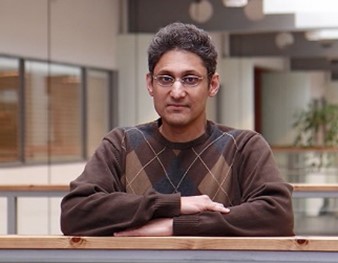
Dr. Shuvra S. Bhattacharyya is a Professor in the Department of Electrical and Computer Engineering at the University of Maryland, College Park. He holds a joint appointment with the University of Maryland Institute for Advanced Computer Studies (UMIACS). He also holds a part-time position as International Research Chair, joint with INSA/IETR, and INRIA in Rennes, France. His research interests include signal processing, embedded systems, electronic design automation, machine learning, wireless communication, and wireless sensor networks. He received a Ph.D. degree from the University of California at Berkeley. He has held industrial positions as a Researcher at the Hitachi America Semiconductor Research Laboratory (San Jose, California), and Compiler Developer at Kuck & Associates (Champaign, Illinois). He has held a visiting summer research position at AFRL in Rome, New York. From 2015 through 2018, he was a part-time visiting professor in the Department of Pervasive Computing at the Tampere University of Technology, Finland, as part of the Finland Distinguished Professor Programme (FiDiPro). He is a Fellow of the IEEE.
Demonstration of before and after the implementation of TSN-based robotics operation and machine tending
Propose target standards body and standards project with objective, purpose, scope, working group operations, and timelines
Speaker/Moderator: Dr. Richard Candell, NIST
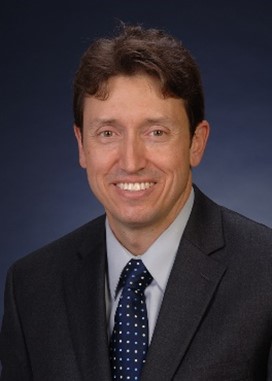
Dr. Richard Candell has over twenty years of experience in wireless systems engineering with extensive experience in the design and evaluation of wireless communications systems. Dr. Candell spent twelve years developing, testing, and deploying secure wireless technologies for commercial and defense applications. He served as the lead systems engineer in developing spread spectrum interference cancellation and performance evaluation strategies for satellite ground stations and mobile phased array beam steering transceivers. He holds patents in successive interference cancellation and transmission burst detection applied to spread-spectrum satellite communications signals. He holds a Ph.D. in Computer Science from the University of Burgundy, Dijon, France. He also holds a BS and MS degree in Electrical Engineering from The University of Memphis. Dr. Candell joined the National Institute of Standards and Technology (NIST) in the US in 2014 where he leads the Industrial Wireless Systems research laboratory. He is a member of the IEEE Industrial Electronics Society and the Robotics and Automation Society. His current research interests include the performance of mobile robotic, manufacturing, and safety applications when deployed with wireless networks as the primary mode of communications. Dr. Candell was the primary contributing author of the Guide to Industrial Wireless Systems Deployments (NIST AMS 300-4) and he serves as the chair of the NIST Industrial Wireless System technical working group.
IEEE-SA standards process - an example of why IEEE 1451 would be good for this effort
Speaker/Moderator: Mr. Kang Lee, NIST
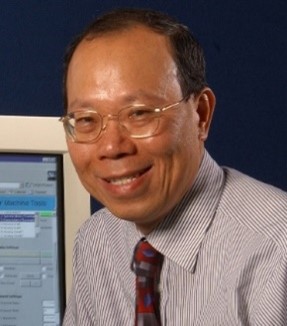
Kang B. Lee received his Bachelor of Engineering Science degree from the Johns Hopkins University and Master of Science in Electrical Engineering degree from the University of Maryland. Kang is an IEEE Life Fellow and retiree of the National Institute of Standards and Technology (NIST) with over forty years of technical and management experiences in precision instrumentation and measurements, flexible and robotic manufacturing, smart and wireless sensor/actuator networks and systems, and precision time synchronization of networked measurement and control systems. Kang had led some smart manufacturing projects that transferred automated manufacturing systems to the US Navy. Kang is currently a research consultant at NIST working on measurements and standards of smart sensors for smart grids and reliable and high-performance wireless systems for factory automation. Kang is the Chair of the IEEE Instrumentation and Measurement Society’s Technical Committee on Sensor Technology, TC-9, overseeing the development of a suite of twelve IEEE 1451 (ISO/IEC 21451) smart transducer standards for wired and wireless sensor and actuator networks, and the IEEE 1588 (IEC 61588) standard recognized worldwide as the Precision Time Protocol (PTP) standard. The PTP standard has been adopted for uses across industries such as industrial automation, telecommunications, test and measurements, smart grids, defense, aerospace, and audio-video systems. Kang has given invited keynotes on smart sensors, radio frequency identification (RFID), Internet of Things (IoT), and precision time protocol (PTP), etc. In 2006 Electronic Engineering Times (EET) profiled Kang in its Great Minds and Great Ideas project as one of the twenty-nine innovators in the world.
Demonstration of a new architecture for WLAN-based TSN: Perspective on requirements and performance evaluation
Speaker: Dr. Iñaki Val, IKERLAN
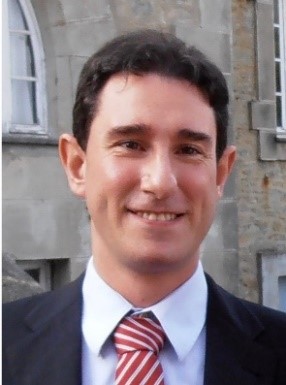
Iñaki Val received B.S. and M.S. degrees from the Department of Electronics Engineering at Mondragon University (Spain) in 1998 and 2001, respectively, and a Ph.D. degree from the Department of Signals, Systems and Radiocommunication at the Polytechnic University of Madrid in 2011. Since 2001, he has been with the Communications department of IKERLAN, and in the past, he has been with Fraunhofer IIS of Erlangen (Germany) as an invited researcher (2005-2006). Currently, he is the Team Leader of the Communication Systems group. His industrial and research activities include the design of dependable industrial communication systems, design and FPGA SoC implementation of digital wireless communications systems, industrial real-time requirements, wired/wireless time synchronization, communications for distributed control systems, vehicular communications, wireless channel propagation/characterization, and digital signal processing. He is currently focused on wireless communications applied to industrial and safety applications. He is a certified TÜV Functional Safety engineer for the design of hardware and software based on the IEC-61508 standard.
Workshop Local Host: Dr. Hans-Peter Bernhard, Silicon Austria Labs
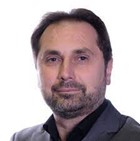
Hans-Peter Bernhard is Principal Scientist, Head of Research Unit Wireless Communications at Silicon Austria Labs, and Senior Scientist at the Institute of Communications and RF Systems at the Johannes Kepler University Linz, Austria. Hans-Peter Bernhard holds a Master’s degree in electrical engineering and a Ph.D. in Technical Sciences from the Technical University Vienna. He was Assistant Professor at TU-Vienna until 1998 and joined the JKU as Lecturer in 1999. In 2014 he started as a Senior Scientist at Johannes Kepler University. At Silicon Austria Labs he started in 2018 as a Principal Scientist where he is leading the Research Unit Wireless Communications. He was Guest Researcher at the Prague Academy of Science and the University of Cambridge. His research interests include the design and analysis of time-sensitive communication systems with a focus on resilient solutions. He has given several invited talks on various aspects of a wireless factory and sensor communications. He has organized/co-organized several special sessions ETFA2019, WFCS2020. He is an active member of the IEEE P1451 standard technical committee and serves as a reviewer for IEEE Transactions on Industrial Informatics, Transactions on Signal Processing, Transactions on Wireless Communication, Transactions on Mobile communications, and numerous international conferences. He is a member of technical committees like IES TC-Industrial Informatics and IES TC-Factory Automation.
Workshop Cosponsor Representative from IES: Dr. Victor Huang, IES
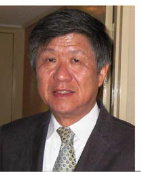
Dr. Victor Huang is a senior-level executive seasoned in high technology industrial management, having served as VP Engineering in 5 separate startups in Silicon Valley, as Deputy Director of the Institute of Microelectronics (IME) in Singapore’s highly successful high technology industry, and Technical Manager at AT&T Bell Laboratories. His experience spans the telecommunications industry and electronic mobility, wireless, and consumer products, and VLSI microprocessor chip design. He is presently a Partner in Sage Technology Resources, a technology and business consulting services firm serving investment, early stage, growth stage, and Global 1000 companies, where he specializes in IT-Automotive sector - Electric Vehicles and infrastructure industry (EV), and in connected and autonomous vehicles. He is also on the Board of Directors on present and past startup companies in Silicon Valley. Dr. Huang is an IEEE Life Fellow, Life AdCom member of the IEEE Industrial Electronics Society (IES), IES Technical Committee Chair of Standards, IES representative to the IEEE Standards Board, Secretary and Member of the IEEE Technical Engineering Management Society (TEMS), Member of the IEEE Communications Society, and the TEMS representative to the IEEE Future Directions Initiative on Symbiotic Autonomous Systems. He is a recipient of the IEEE Standards Association (IEEE-SA) Standards Medallion for exceptional contributions to standards development. He has authored/co-authored over 40 IEEE and professional publications, and a holder of 4 international patents. Dr. Huang holds an MS and Ph.D. in Electrical Engineering from the University of Virginia, and a BS (EE) from the Virginia Military Institute.
Workshop Cosponsor Representative from IES: Dr. Allen Chen, IES
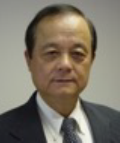
Dr. Allen C. Chen has over 30 years of technical and managerial experience in the computer, VLSI microprocessor, and wireless communication industries. During his 20-years with AT&T Bell Labs (then Lucent Technologies), he led a team to develop call processing for CDMA and cdma2000 Base Stations. Later serving as VP of Engineering for Teleion Wireless, he spearheaded the development of cdma2000 wireless data modules for smartphones from its concept to productization. Allen had extensive experience in the development of minicomputer processors, VLSI microprocessor chips, and embedded custom systems. Allen represented IEEE Technology and Engineering Management Society (TEMS) to IEEE 5G Steering Committee. Allen is an IES Life AdCom Member, IEEE Life Senior Member, and is IES Standards Technical Committee Chair. He has served for IES in various capacity including General Chair, Program Chair, Track Chair, and Session Chair for many IES conferences and IES Treasurer. He was Secretary for IEEE TEMS. Allen was a recipient of an IEEE Third Millennium Medal Award and IES Anthony Homfeck Award and was Chinese Institute of Engineers-USA National Council Chair in 2016. Allen was a founding member and Chairman of the Board of Trustees of Wireless and Optical Communications Conference (WOCC). He holds an MS in ECE from the University of North Dakota and a Ph.D. in ECE from the University of Wisconsin, Madison, and is a Professional Engineer.
